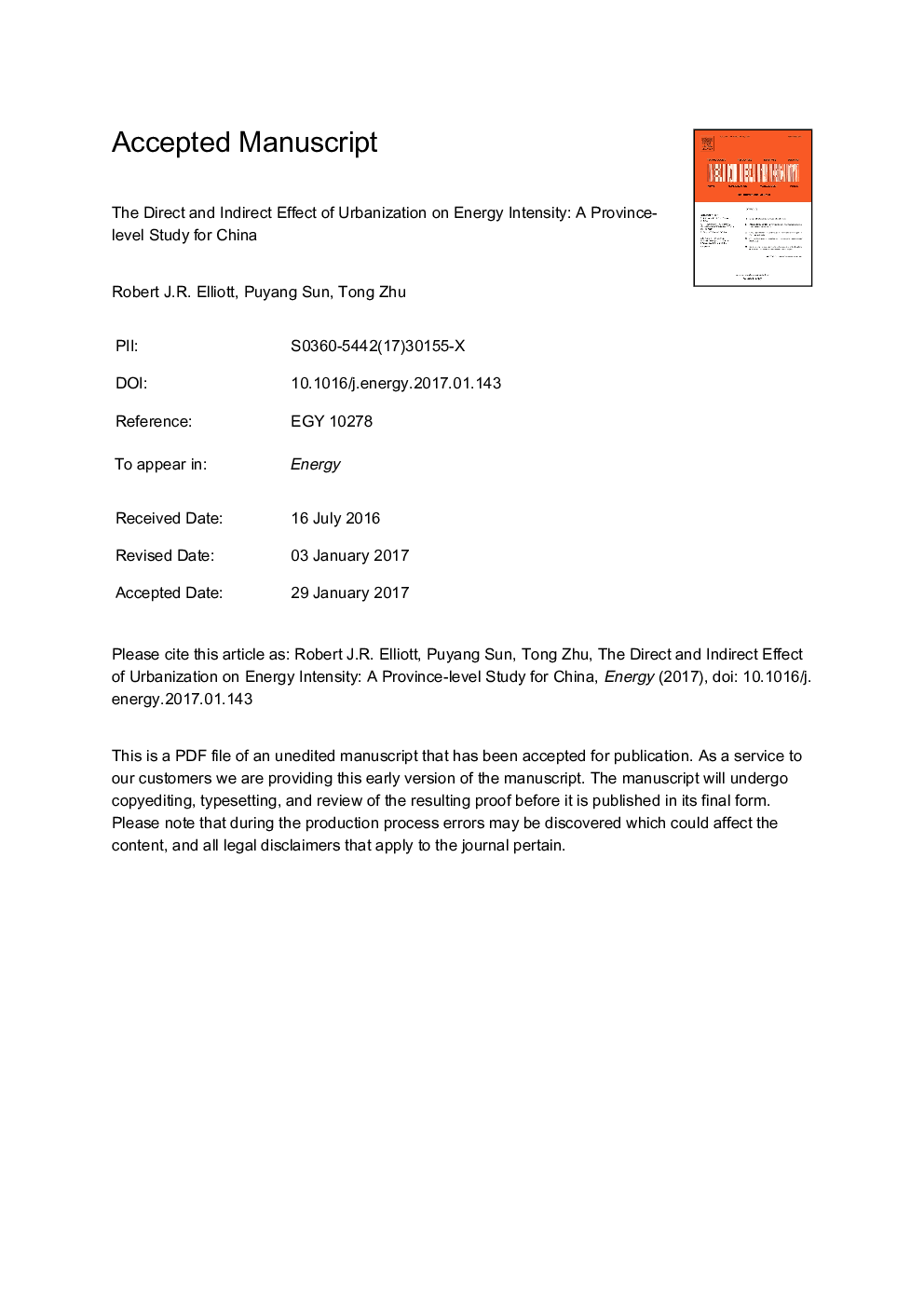| Article ID | Journal | Published Year | Pages | File Type |
|---|---|---|---|---|
| 5476130 | Energy | 2017 | 49 Pages |
Abstract
In March 2014 China announced its long awaited plan for managing the migration of the rural population into already overcrowded urban areas. The so called “new style” of urbanization has potentially important implications for China's energy use. However, the relationship between urbanization and energy intensity is not straight-forward. This papers investigates the direct and indirect impacts of urbanization on the intensity of energy use in China using a balanced panel of 30 provinces for the period 1995 to 2012. Using recently developed mean group estimation techniques it is found that the direct impact of urbanization on energy intensity is generally positive while the indirect impact measured through four different channels (construction, industrial upgrading, transportation and changing lifestyles) tends to be negative. On average, a one percentage point increase in urbanization leads to an increase in energy intensity of between 0.753 and 1.473% for electricity and coal intensity respectively. The construction channel tends to be the most significant indirect pathway. The transportation and industrial upgrading channels are significant but only under certain circumstances. The results also highlight the difference between formal and informal urbanization as well as the importance of province heterogeneity. The implication is that future national targets should be implemented with care.
Related Topics
Physical Sciences and Engineering
Energy
Energy (General)
Authors
Robert J.R. Elliott, Puyang Sun, Tong Zhu,
